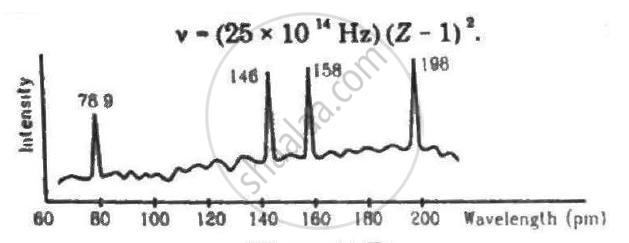Advertisements
Advertisements
प्रश्न
The energy of a photon of a characteristic X-ray from a Coolidge tube comes from
पर्याय
the kinetic energy of the striking electron
the kinetic energy of the free electrons of the target
the kinetic energy of the ions of the target
an atomic transition in the target
उत्तर
an atomic transition in the target
In an X-ray tube, electrons are emitted by the filament. These electrons are made to strike the filament by applying an electric field between the filament and the target. As a result of it, the kinetic energy of the electrons is lost to the target atoms. This energy is utilised by the target atoms to knock out an electron from the innermost shell. Consequently, the electron makes a transition from the higher energy state to this vacant shell. Due to this transition, the difference of energy of the two states gives photon of characteristic X-ray.
APPEARS IN
संबंधित प्रश्न
Give a reason for the following:
Long-distance radio broadcasts use short-wave bands. Why?
Give a reason for the following:
It is necessary to use satellites for long-distance TV transmission. Why?
Optical and radio telescopes are built on the ground but X-ray astronomy is possible only from satellites orbiting the earth. Why?
Name the subjective property of light related to its wavelength.
Which radiation is used for satellite communication?
What is the range of the wavelength of the following electromagnetic waves?
(A) Radio waves.
Give one use of microwaves.
Name the rays or waves of highest frequency .
If the potential difference applied to the tube is doubled and the separation between the filament and the target is also doubled, the cutoff wavelength
If the current in the circuit for heating the filament is increased, the cutoff wavelength
Cutoff wavelength of X-rays coming from a Coolidge tube depends on the
(a) target material
(b) accelerating voltage
(c) separation between the target and the filament
(d) temperature of the filament.
For a given material, the energy and wavelength of characteristic X-rays satisfy
(a) E(Kα) > E(Kβ) > E(Kγ)
(b) E(Mα) > E(Lα) > E(Kα)
(c) λ(Kα) > λ(Kβ) > λ(Kγ)
(d) λ(Mα) > λ(Lα) > λ(Kα).
Find the maximum potential difference which may be applied across an X-ray tube with tungsten target without emitting any characteristic K or L X-ray. The energy levels of the tungsten atom with an electron knocked out are as follows.
| Cell containing vacancy | K | L | M |
| Energy in keV | 69.5 | 11.3 | 2.3 |
Continuous X-rays are made to strike a tissue paper soaked with polluted water. The incoming X-rays excite the atoms of the sample by knocking out the electrons from the inner shells. Characteristic X-rays are analysed and the intensity is plotted against the wavelength. Assuming that only Kα intensities are detected, list the elements present in the sample from the plot. Use Moseley's equation v − (25 × 1014Hz)(Z − 1)2.
(Use Planck constant h = 6.63 × 10-34 Js= 4.14 × 10-15 eVs, speed of light c = 3 × 108 m/s.)

Give one use of electromagnetic radiation in Microwaves.
Answer briefly.
Name the most harmful radiation entering the Earth's atmosphere from outer space.
Name the e.m. waves which are suitable for radar systems used in aircraft navigation. Write the range of frequency of these waves.
An e.m. wave exerts pressure on the surface on which it is incident. Justify.
Following QN ∴ 14, the radiation force on the roof will be
Below is an incomplete table showing the arrangement of electromagnetic spectrum in the increasing order of their wavelength. Complete the table:
| Gamma ray | X - ray | UV rays | Visible rays | Infrared | A | Radio waves |
- Identify the radiation A.
- Name the radiation used to detect fracture in bones.
- Name one property common to both A and Radio waves.
